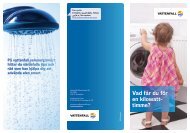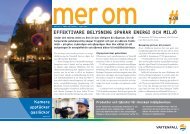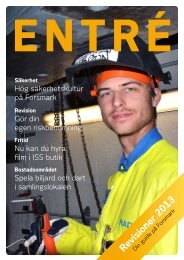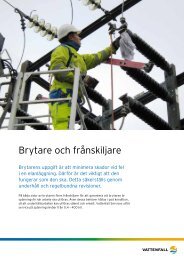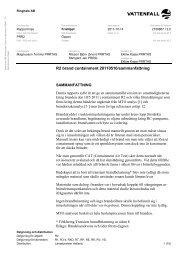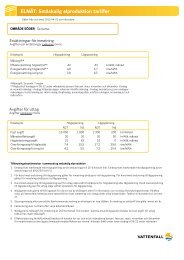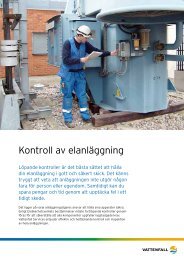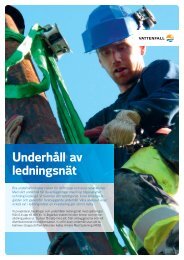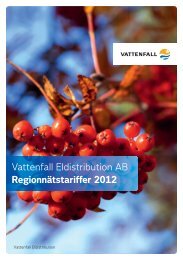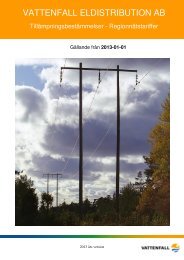This environmental impact assessment for Kriegers flak ... - Vattenfall
This environmental impact assessment for Kriegers flak ... - Vattenfall
This environmental impact assessment for Kriegers flak ... - Vattenfall
You also want an ePaper? Increase the reach of your titles
YUMPU automatically turns print PDFs into web optimized ePapers that Google loves.
PATHWAYS OF CURRENTS IN THE BALTIC<br />
Salty seabed water enters through Öresund and passes<br />
the Drogden threshold and then moves between Mön<br />
and <strong>Kriegers</strong> Flak down towards the Darss threshold,<br />
where it falls in under the Darss current. These two<br />
currents continue anti-clockwise from the south-western<br />
corner of the Arcona basin and follow along the<br />
southern line towards Cape Arcona where they intermingle/mix.<br />
Thereafter the salty water moves down<br />
to the deep parts of the Arcona basin or continues<br />
Inflow of salt-rich deep layer water into the Baltic, Hydromod<br />
tion and exchange of the deep water of the Baltic.<br />
The Þ gure above illustrates the salt and oxygen<br />
content of the different Baltic basins.<br />
The water balance of the Baltic Sea is characterized<br />
by a yearly surplus of 470 km³ fresh water. <strong>This</strong> allows<br />
a ß ow of bracken water with a salinity of eight PSU<br />
from the Baltic into the Skagerak (water in the upper<br />
layer). The surrounding waters of Skagerak have a very<br />
much higher salinity, 33 PSU, and are hence considera-<br />
PRESENTATION OF THE AREA 69<br />
northeast along the narrow inlets of Bornholm. A part<br />
of the Drogden current divides northeast of <strong>Kriegers</strong><br />
Flak and moves clockwise to join up with the westerly<br />
Drogden current in the south-eastern corner of the<br />
Arcona basin. Via the narrow inlet of Bornholm, the<br />
salty seabed water in the Arcona basin moves further<br />
east, ending up in the Gotland basin. Reference: On<br />
the pathways and mixing of salt-water Plumes in the<br />
Arcona Sea, 2003, H.U. Lass, IOW, Warnemünde.<br />
bly heavier. <strong>This</strong> water plume with heavier water is the<br />
source of a pressure gradient creating a ß ow of heavier<br />
and saltier water from the Skagerak into the Baltic (the<br />
water at the seabed). <strong>This</strong> is described as inland sea<br />
circulation and is occurring during the summer half of<br />
the year.<br />
The current condition in the Baltic is very variable<br />
and driven mainly by the wind, horizontal density<br />
gradients and differences in the water level (Fennel




